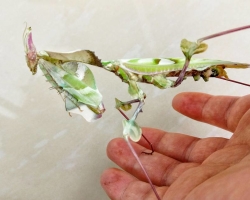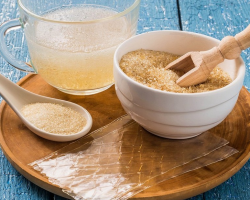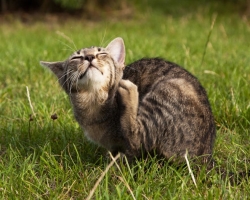Let's talk about the types of manual seams, their purpose and features.
Content
- Types of the main manual seams
- Types of direct manual seams with pictures
- Types of oblique manual seams
- Types of estimated manual seams
- Types of binding manual seams
- How to make complex manual seams: description with diagrams
- Types of decorative manual seams for embroidery
- Video: What are manual seams?
Manual seams are the basis of sewing. They need to not only know “in the face” and correctly perform, but also understand in which case to use. Even if the hand seam is used for the “black” version, it must be carefully done, given the length and frequency of the stitches.
Types of the main manual seams
Manual seams are divided into straight and oblique, simple and complex views.
Simple options are:
- Empty
- Subjects
- Assembly
- Copy
- Highlighting
The complex category is divided into:
- Loop
- Bearing
- Figure
- Stopal
- Light
- Titter
Important: when performing stitches, the tension of the thread should be uniform.

Types of direct manual seams with pictures
- The most just option or seam "vered needle"
It looks the same on the front and wrong side, the distance of the stitches and gaps is the same, it is performed from right to left. It is used to mark the cutouts, manual assembly. On its basis, the following options are built.

- The most popular - estimated seam
It is similar in the execution of the previous option, but on the front side the length of the stitches is greater than on the wrong side, and the distance between them is shorter. The length of the stitch is from 0.5 mm to 3 cm, depending on the type and thickness of the fabric, between the passes of 5-7 mm. It is used to connect the parts, marks of the circuit, the places of docking of the parts, the line of the middle of the back and the front.
There are two types: for temporary Squeezing two parts along the contour (Fig. a) and for noticeing the bending of the product below, For example, for sleeves and bottom of clothing (Fig. B). There is also a subspecies of an estimated seam - The point line. It is used more often to connect two parts of a small size, such as a patch, or when connecting shelves with an on -board lining.


- Copy or portable stitches
Their goal is to transfer the line from one part to another, or copy the joint marks. The needle is performed by the seam, but at the first stitch the thread is not reaching 1.5-2 cm, then two straight stitches, etc. according to the scheme. Distance - from 5 mm to 1 cm. Then the fabric is pushed out, and the stretched threads are neatly cut.

- Manual assembly or double seam "Forward Needle"
For work, smooth and strong threads are needed. The second line passes at a distance of 0.5-1 cm from the previous, completely identical. The move is “forward with a needle”. Used to assemble folds for the required length.

- Sitty seam or "for the needle"
It is performed from right to left, the needle is inserted at the puncture site, extracted at a distance of one stitch. On the wrong side, such stitches are twice as much as on the front side. Creates an imitation of a machine -set seam for a durable stitching of two parts. Depending on the type of fabric, the distance between the stitches and their length can be different.
- Seam "For the needle" with fabric passes
It is fully identical to a simple lowercase seam, but at the same time the needle is extracted at a distance of two stitches, while occupying less time. That is, from the inside, the distance between the stitches is 3 times more. This method is used to sew zippers and linings.

Types of oblique manual seams
They are permanent and temporary, as well as to wipe the edges and fabric fabric. They are laid from left to right, the length of the stitches is 0.7-2 cm. The needle is removed through all layers from below, a few millimeters from the edge. The needle is perpendicular to the cut of the fabric, but the joint lines are at an angle.
Spray manual seams are:
- Estimated- for a shutter of the collar, selection, etc. To maximize the details of each other and exclude their displacement;
- Fatherless- for overhead pockets with or without, collars, sides, etc. Such a seam is necessary to create a neat front line of already stitched parts to hide the seam and cuts inside;
- Quilted- We need several layers of fabric. They are more often used so that the lining material holds the shape well or that the product is better than the “village” in the figure. The wrong side is completely stitched, only slightly capturing the main part. On the front side of the seams should not be visible!

Spit stitches are used for the bearing and estimated seam. We will consider them below.
Types of estimated manual seams
- Seam "over the edge" or the main estimated
It goes from right to left. These are parallel and the same stitches located askance to a cut of fabric. They are identical on both sides. 2-3 stitches are on 1 cm. Such a seam is necessary to fasten the tissues with a manual method that crumble.

- Cross -shaped hand seam
This is a double oblique seam - goes from left to right and in the opposite direction. The needle enters the already created holes from the previous move.
- Loop or edge seam
It is similar to the first option, but the needle goes perpendicular to the fabric cut, passing on top of the thread. The needle movements on itself, the frequency of stitches is 2-3 per 1 cm. The loop from the bottom of the needle when performing is slightly tightened. Most often used for finishing crumbling fabrics, processing loops and as a decorative element.

- Seam "Twist"
A complex seam for processing very “bulk” and light fabrics. Direct estimates are made as close as possible to each other, wrap the edge of the canvas with the second hand. Such a seam with passes can be performed-for this, capture 1-2 mm of the main fabric and 2-3 mm strictly at the top of the wrapped segment. The frequency of stitches is not more than 5 mm. Threads are used thin (can be silk) in the tone of the canvas.

Types of binding manual seams
There are open, secret and curly.
- Open seam
Used for non -playing fabrics and fading the bottom of trousers, skirts, etc. The needle comes out of the bend of the tilted part, captures 2-3 mm of the main fabric, again return to the wrapped part (at a distance of 3-7 mm) and capture 2-3 mm. 1 cm 2-3 stitches. The principle of a oblique manual seam is used - the needle enters perpendicularly, but the stitches are obtained at an angle parallel to each other.
- Stretch manual binding seam
It is similar to the previous method, but the stitches are very short on the front side. On the main fabric, we capture 1-2 threads, on the bent side-2-3 mm. The color of the threads should coincide with the color of the fabric. It is used to fade blouses, parts from a thin canvas, or in case the seam is not noticeable.

- Figure suture "Kozlik"
Used for dense fabrics or for decoration. The stitches are laid from left to right in the form of a cross, the needle goes strictly parallel to the cut! The length of the stitches is from 4 to 7 mm, their density depends on the type of fabric - the denser the fabric, the less often the stitches.

How to make complex manual seams: description with diagrams
- Light manual seam
It is used for through fastening and processing of the edges of the side, gate, etc. And in the case when the line should not be visible! Sometimes a swelling seam replaces a machine decorative line, providing the resistance of the product. We pierce the bottom layer completely, we capture the top layer only 2-3 mm. 1 cm up to 3 stitches.
- Cunning or secret seam
It is used in the repair of clothing or when creating a hidden seam. The needle is inserted on the left along one part of the canvas, we make a stitch to capture 1-1.5 mm fabric on the other side. We repeat such an algorithm, capturing only a little canvas. 1 cm up to 3 stitches. We pull the thread - the seam is not visible, all the stitches are hidden from the wrong side.

- Titious seam
He is the seam "VSTOK". It is used to connect woolen and other thick fabrics that are not crumbling. It can be performed straight, oblique and even loop stitches. Their length is 2-3 mm, the frequency is 6-7 stitches per 1 cm.
- Spear seam
It is currently used very rarely. It was previously used to repair damaged things and for decorative embroidery. It is laid with perpendicular straight or oblique stitches with a high frequency. The threads should create weaving.

Types of decorative manual seams for embroidery
- Tambourine seam or loop
The loops come out one of the other, there are an open, closed and oblique type. The move from top to bottom, the needle enters the fabric in the direction of itself. After administration from the thread, create a loop (hold with a thumb), the needle is removed at the distance of the stitch over the thread. Gently stretch the thread to close the link.
Important: the needle enters and comes out at one point or on one line!

- Decorative manual seam "Christmas tree"
The needle is pierced on the left or on the right. Take the thread with your finger to create a loop under a needle. The length of the stitch depends on the thickness and looseness of the fabric, but they are always the same.
- Submissive seam
The course from the bottom up, from left to right. The stitch begins in the middle of the length of the previous stitch, the thread is always located on one side. It is important that the length of the stitches is the same. The line is used to embroide the contours of the patterns or to emphasize the element.

- Seam cross
It is performed in two ways. 1 - move from left to right, the needle is introduced perpendicular to the seam line, then in the opposite direction. 2 - the fabric is captured by a needle from above or below. The first stitch from below/left - up/right; The second stitch from below/right is up/left.


Video: What are manual seams?
Read also:







